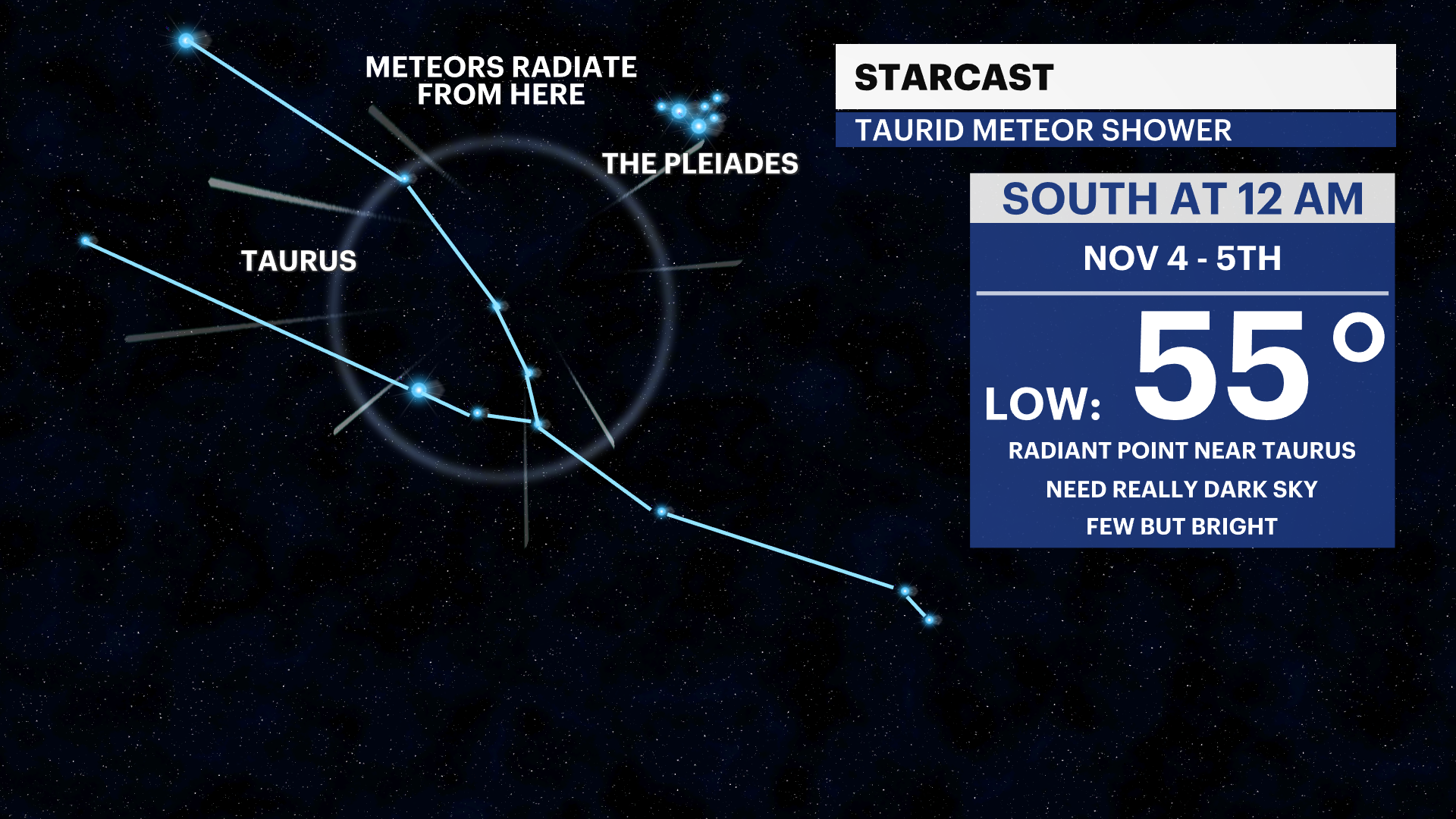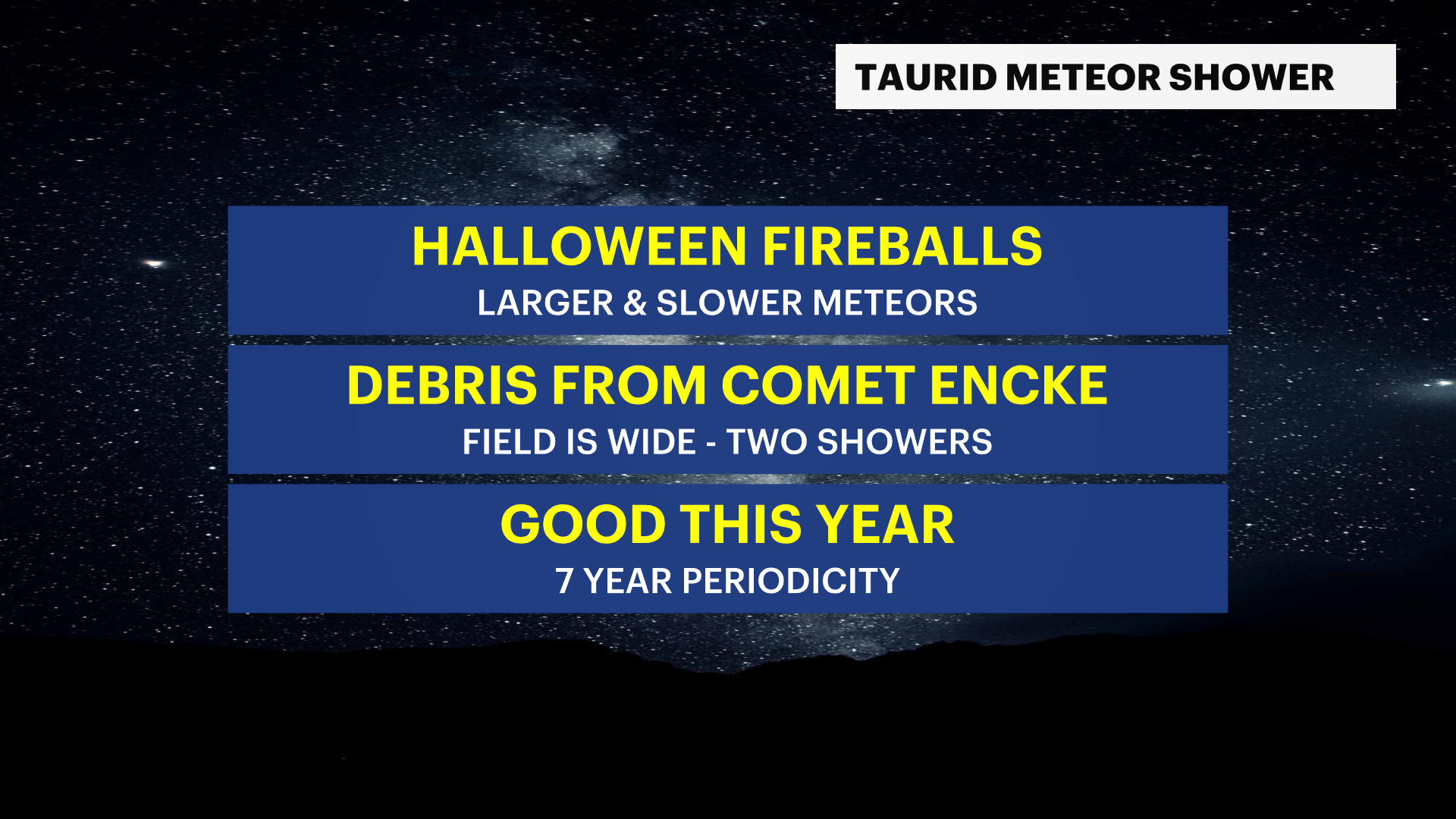More Stories
Fall is a
wonderful time for meteor showers! There are several ongoing now through
the end of the year. In fact, some of these showers overlap. If you
happen to see any bright fireballs over the next few weeks, it could be from
the Taurids. Sometimes
they are known as “Halloween fireballs.”
This meteor shower
comes in two waves, the Northern and Southern Taurids. The debris
field from the parent comet, Comet Encke, is really spread out and is quite
large. The
Southern Taurids peak around Nov. 4-5. They may not be the most active in
terms of the total number of meteors, but can be quite beautiful because of
their larger size and slower motion. The Northern Taurids peak on Nov. 12-13
and are known for their fireballs. They also have a seven-year periodicity to
them and this year hits. The only issue could be the moon,
which may get in the way for some viewing. The moon becomes full again on Nov. 8.

These meteors are
larger and also survive the trip longer through the Earth’s atmosphere. They travel
roughly 17 miles per second, while the faster Perseids travel 37 miles per
second. The best time to start looking for them is now at the end of the month
and into early November, when both showers overlap.
To best view them,
try to go out late. The radiant point is the constellation Taurus, which will be high
in the southern sky after midnight. Look southeast to start and try to
find Orion. That
constellation is usually easiest to find, even in our skies. Taurus is the bull
and is northeast of Orion. The bright star that makes the bull’s
eye is Aldebaran. You don’t have to stare directly at Taurus, but just look up - you’ll never know where you’ll see one. Dress warmly too, bring blankets and
chairs in order to stay comfortable. Give yourself about 30 minutes for
your eyes to adjust and just have fun!

More from News 12
1:51

STORM WATCH: Weekend snow can cause dangerous travel on Long Island
0:45

Off-duty Nassau County officer arrested for DWI in wrong-way crash with garbage truck that injured 3
1:54

Central Islip teen arrested, accused of stealing car with 3-year-old inside in Brentwood
1:42

Elevated lead levels found in drinking water at Farmingdale schools
1:44

Gabby Petito’s family brings domestic violence awareness to Long Island schools, supports grieving parents of Emily Finn
2:41
